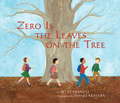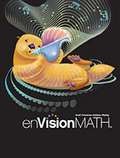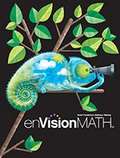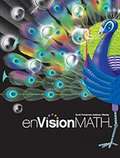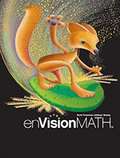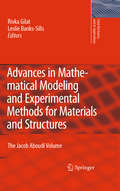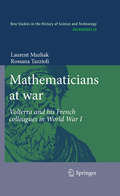- Table View
- List View
Worldwide Differential Calculus
by David B. MasseyOur goal with this textbook is, of course, to help you learn Differential Calculus (the Calculus of derivatives). But why publish a new textbook for this purpose when so many already exist? There are several reasons why we believe that our textbook is a vast improvement over those already in existence.
Zero Is The Leaves On The Tree
by Betsy Franco Shino AriharaIt's easy to count three of something-- just add them up. But how do you count zero, a number that is best defined by what it's not?Can you see it?Can you hear it?Can you feel it?This important math concept is beautifully explored in a way that will inspire children to find zero everywhere--from the branches of a tree by day to the vast, starry sky by night.
enVisionMath [Grade 1]
by William Tate Randall I. Charles Mary Cavanagh Dinah Chancellor Juanita V. Copley Warren D. Crown Francis Skip Fennell Alma B. Ramirez Kay B. Sammons John A. Van de Walle Janet H. Caldwell Jane F. SchielackNIMAC-sourced textbook
enVisionMath [Grade 1] (California)
by William Tate Randall I. Charles Mary Cavanagh Dinah Chancellor Juanita V. Copley Warren D. Crown Francis Skip Fennell Alma B. Ramirez Kay B. Sammons Jane F. Shielack John A. Van de WalleNIMAC-sourced textbook
enVisionMath [Grade 1] (Illinois)
by William Tate Mary Cavanagh Dinah Chancellor John A. Van de Walle Alma Ramirez Warren Crown Francis Fennell Kay Sammons Juanita Copley Jane Schielack Randall Charles Janet CaldwellNIMAC-sourced textbook
enVisionMath [Grade 1] (Ohio)
by William Tate Mary Cavanagh Dinah Chancellor John A. Van de Walle Alma Ramirez Warren Crown Francis Fennell Kay Sammons Juanita Copley Jane Schielack Randall Charles Janet CaldwellNIMAC-sourced textbook
enVisionMath [Grade 1] (Texas)
by William Tate Randall I. Charles Mary Cavanagh Dinah Chancellor Juanita V. Copley Warren D. Crown Kay B. Sammons Jane F. Shielack John A. Van de Walle Janet H. Caldwell Francis FennellNIMAC-sourced textbook
enVisionMath [Grade 2]
by William Tate Randall I. Charles Mary Cavanagh Dinah Chancellor Juanita V. Copley Warren D. Crown Francis Skip Fennell Alma B. Ramirez Kay B. Sammons John A. Van de Walle Janet H. Caldwell Jane F. SchielackNIMAC-sourced textbook
enVisionMath [Grade 3]
by William Tate Randall I. Charles Mary Cavanagh Dinah Chancellor Juanita V. Copley Warren D. Crown Francis Skip Fennell Alma B. Ramirez Kay B. Sammons John A. Van de Walle Janet H. Caldwell Jane F. SchielackNIMAC-sourced textbook
enVisionMath [Grade 3] (New York)
by William Tate Mary Cavanagh Dinah Chancellor John A. Van de Walle Alma Ramirez Warren Crown Francis Fennell Kay Sammons Juanita Copley Jane Schielack Randall Charles Janet CaldwellNIMAC-sourced textbook
enVisionMath [Grade 4]
by William Tate Randall I. Charles Mary Cavanagh Dinah Chancellor Juanita V. Copley Warren D. Crown Francis Skip Fennell Alma B. Ramirez Kay B. Sammons John A. Van de Walle Janet H. Caldwell Jane F. SchielackNIMAC-sourced textbook
enVisionMath [Grade 4] (California)
by William Tate Randall I. Charles Mary Cavanagh Juanita V. Copley Warren D. Crown Francis Skip Fennell Alma B. Ramirez Kay B. Sammons Jane F. Shielack John A. Van de WalleNIMAC-sourced textbook
enVisionMath [Grade 4] (New York)
by William Tate Mary Cavanagh Dinah Chancellor John A. Van de Walle Alma Ramirez Warren Crown Francis Fennell Kay Sammons Juanita Copley Jane Schielack Randall Charles Janet CaldwellNIMAC-sourced textbook
enVisionMath [Grade 5]
by William Tate Randall I. Charles Mary Cavanagh Dinah Chancellor Juanita V. Copley Warren D. Crown Francis Skip Fennell Alma B. Ramirez Kay B. Sammons John A. Van de Walle Janet H. Caldwell Jane F. SchielackNIMAC-sourced textbook
enVisionMath [Grade 5] (California)
by William Tate Randall I. Charles Mary Cavanagh Juanita V. Copley Warren D. Crown Francis Skip Fennell Alma B. Ramirez Kay B. Sammons Jane F. Shielack John A. Van de WalleNIMAC-sourced textbook
enVisionMath [Grade 5] (Illinois)
by William Tate Mary Cavanagh Dinah Chancellor John A. Van de Walle Alma Ramirez Warren Crown Francis Fennell Kay Sammons Juanita Copley Jane Schielack Randall Charles Janet CaldwellNIMAC-sourced textbook
enVisionMath [Grade 5] (New York)
by William Tate Mary Cavanagh Dinah Chancellor John A. Van de Walle Alma Ramirez Warren Crown Francis Fennell Kay Sammons Juanita Copley Jane Schielack Randall Charles Janet CaldwellNIMAC-sourced textbook
enVisionMath [Grade 6]
by William Tate Randall I. Charles Mary Cavanagh Dinah Chancellor Juanita V. Copley Warren D. Crown Francis Skip Fennell Alma B. Ramirez Kay B. Sammons John A. Van de Walle Janet H. Caldwell Jane F. SchielackNIMAC-sourced textbook
enVisionMath [Grade 6] (California)
by William Tate Randall I. Charles Mary Cavanagh Juanita V. Copley Warren D. Crown Francis Skip Fennell Alma B. Ramirez Kay B. Sammons Jane F. Shielack John A. Van de WalleNIMAC-sourced textbook
enVisionMath [Grade K]
by William Tate Randall I. Charles Mary Cavanagh Dinah Chancellor Juanita V. Copley Warren D. Crown Francis Skip Fennell Alma B. Ramirez Kay B. Sammons John A. Van de Walle Janet H. Caldwell Jane F. SchielackNIMAC-sourced textbook
enVisionMath [Grade K] (New York)
by William Tate Mary Cavanagh Dinah Chancellor John A. Van de Walle Alma Ramirez Warren Crown Francis Fennell Kay Sammons Juanita Copley Jane Schielack Randall Charles Janet CaldwellA math text for Kindergartners.
enVisionMath, Grade 4 (Texas)
by William Tate Randall I. Charles Mary Cavanagh Dinah Chancellor Juanita V. Copley Warren D. Crown Kay B. Sammons Jane F. Shielack John A. Van de Walle Janet H. Caldwell Francis FennellMath textbook grade 4
enVisionMath[Grade 1] ( New York)
by William Tate Mary Cavanagh Dinah Chancellor John A. Van de Walle Alma Ramirez Warren Crown Francis Fennell Kay Sammons Juanita Copley Jane Schielack Randall Charles Janet CaldwellNIMAC-sourced textbook
Advances in Mathematical Modeling and Experimental Methods for Materials and Structures: The Jacob Aboudi Volume (Solid Mechanics and Its Applications #168)
by Leslie Banks-Sills Rivka GilatThis work presents a collection of papers, written by leading authors in honor of Professor Jacob Aboudi. Jacob Aboudi served as Head of the Department of Solid Mechanics, Materials and Structures, as Dean of the Faculty of Engineering and as Incumbent of the Diane and Arthur Belfer Chair of Mechanics and Biomechanics. Aboudi has published more than 200 papers, 2 books and is a leading authority in the field of composite materials. The papers in this volume cover a wide spectrum of topics in the forefront of research in experimental methods and mathematical modeling of materials and structures. Subjects treated include developments in materials science, theoretical and applied mechanics, applied mathematics, applied physics, computational methods in engineering, mechanical and civil engineering. Both theoretical and experimental approaches are presented. As this book reflects the state of the art, possible engineering applications and future research directions are suggested.
Mathematicians at war
by Laurent Mazliak Rossana TazzioliNumerous scientists have taken part in the war effort during World War I, but few gave it the passionate energy of the prominent Italian mathematician Volterra. As a convinced supporter of the cause of Britain and France, he struggled vigorously to carry Italy into the war in May 1915 and then developed a frenetic activity to support the war effort, going himself to the front, even though he was 55. This activity found an adequate echo with his French colleagues Borel, Hadamard and Picard. The huge correspondence they exchanged during the war, gives an extraordinary view of these activities, and raises numerous fundamental questions about the role of a scientist, and particularly a mathematician during WW I. It also offers a vivid documentation about the intellectual life of the time ; Volterra's and Borel's circles in particular were extremely wide and the range of their interests was not limited to their field of specialization. The book proposes the complete transcription of the aforementioned correspondence, annotated with numerous footnotes to give details on the contents. It also offers a general historical introduction to the context of the letters and several complements on themes related to the academic exchanges between France and Italy during the war.

